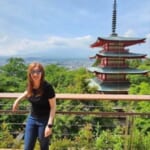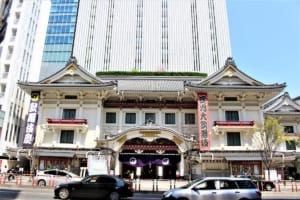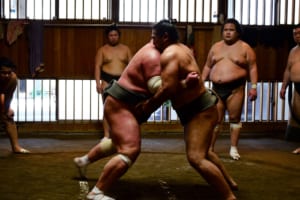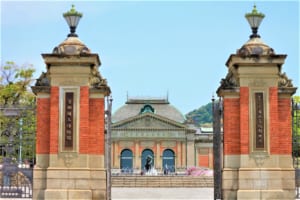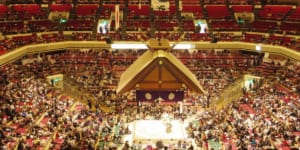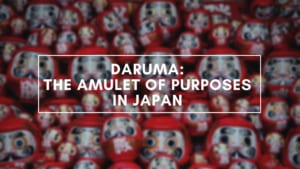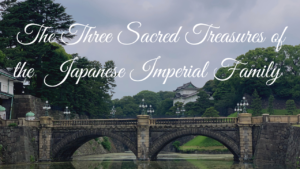Kabuki Theatre
Discover all you need to know about Kabuki Theatre, the Japanese ancient performing art
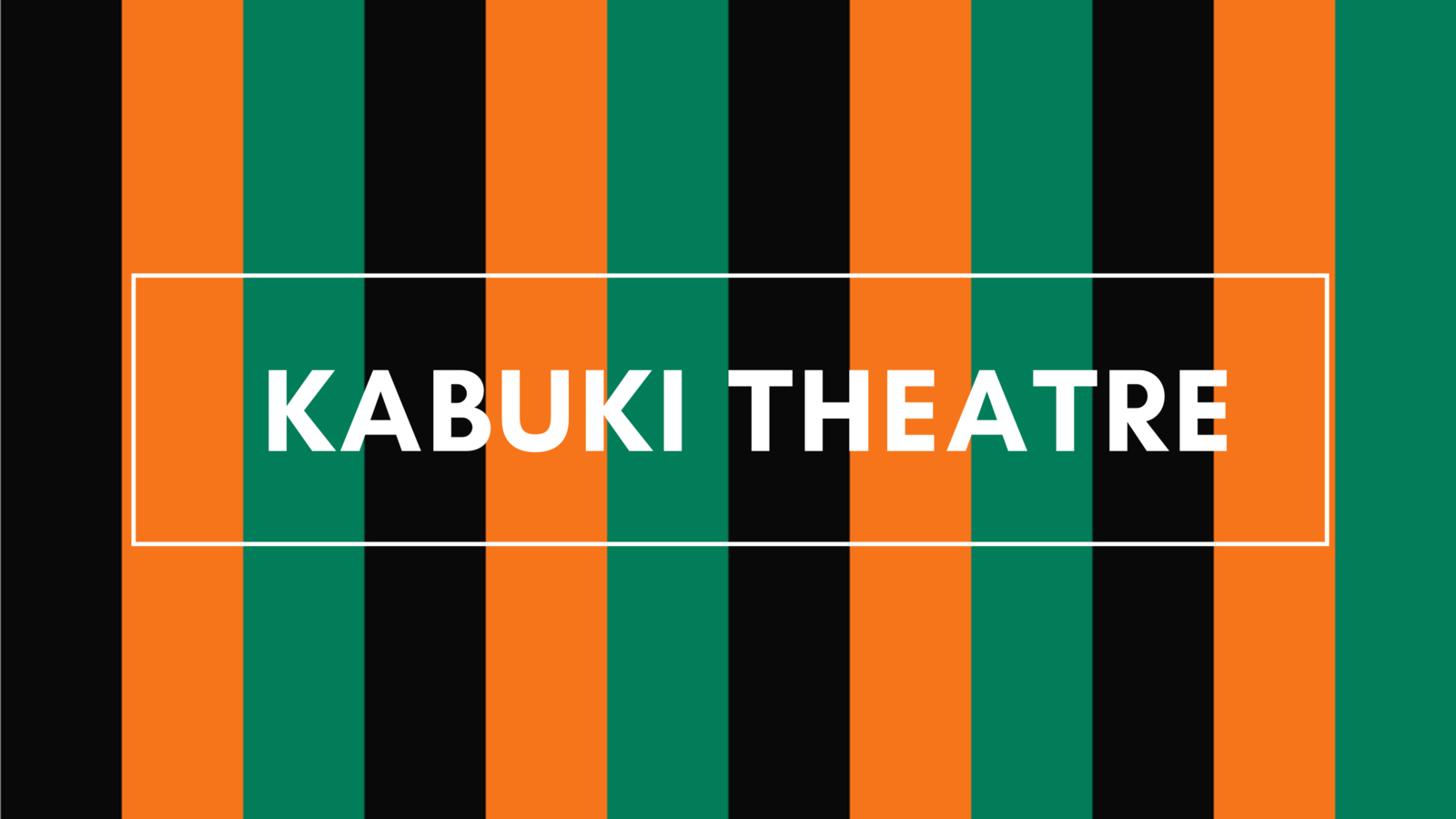
Unique and eye-catching makeup, extravagant wigs and elaborately designed costumes and colorful stage. we are talking about the traditional Kabuki Theater. The Kabuki Theater is one of the most popular traditional performing arts in Japan, along with the Noh.
Probably even those who don’t know what Kabuki is about have seen references to this scenic art and it’s within your imaginary about Japan. For example, if I show you this, surely you have seen it before somewhere.
*Please note that this article contains affiliate links.

All these are elements of kabuki. Masks refer to the makeup used in kabuki, for example.
In contrast to the Noh theater, which was born as art for the high feudal classes, the kabuki was born among the working classes as a form of expression and entertainment.
Although it’s included as theater, in reality the Kabuki is much more than just normal theater, since it combines acting, dancing and music. In fact, the individual kanji of the word kabuki, from left to right, mean “sing” (歌 ka), “dance” (舞 bu), and “ability” (伎 ki). Kabuki is often translated as “the art of singing and dancing”. There’s another theory believed that it’s actually derived from the verb kabuku, which means “to bow”, or “to be out of the ordinary”, so that the meaning of kabuki can also be interpreted as “experimental” or “strange” theater.
The Origins
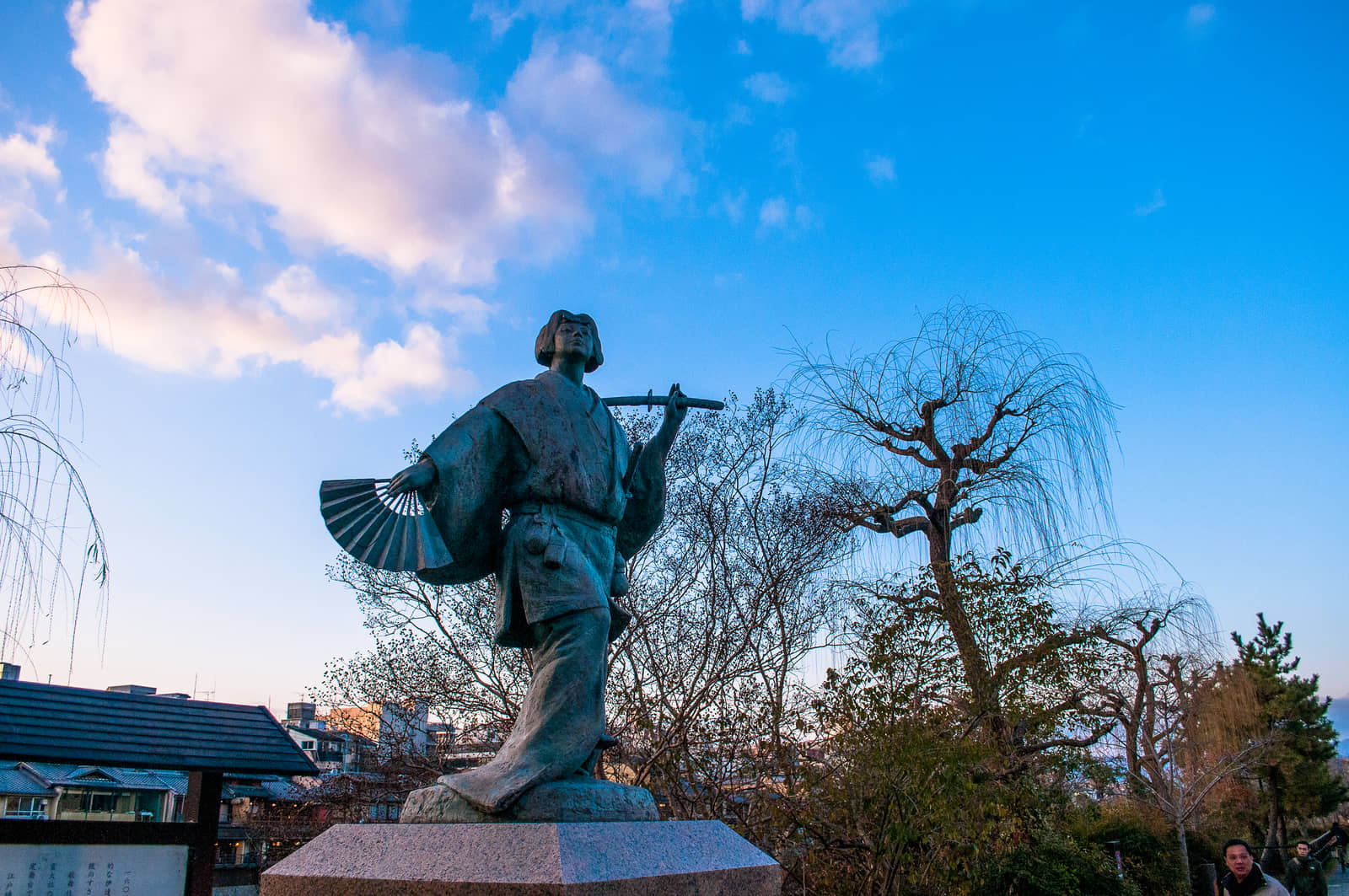
The origins of kabuki are still uncertain, but the most widespread version says it was created by a woman in the early 1600s, in the Edo era. That woman was Okuni, a miko from Izumi shrine, the oldest shrine in Japan. His father worked as a blacksmith for the shrine and from a young age his parents asked her to enter the shrine to help. Okuni had a great artistic talent and in a short time she became well-known for it.
It’s believed that she was sent to act in several parts across of the country with the objective of raising funds for the shrine, and thus in 1603 she arrived in Kyoto. She started acting in different places in Kyoto, but especially near the Kamo river and shrines. Gradually their shows were leaving behind the religious aspect and began to address issues of daily life, often in a humorous way.
Okuni created his own company of women, formed mainly by local prostitutes and misfits women, whom she instructed in the performing arts (dance, theater and singing). Although her performances were about parodying the daily life of the time, her dances were sensual and suggestive. Known as Onna-kabuki (onna means woman), since women also performed the male roles, the shows of the Okuni company quickly became immensely popular, to the point that Okuni was asked to performed for the Imperial Court . Although the most successful shows of Okuni were between the suburbs of pleasure and the night, but also among the common people. The other scenic art of the time, the Noh theater, had been banned from the lower classes and was a form of entertainment exclusive to the upper classes, such as the nobility and the samurai. In addition to being an art further from the real life of people. No wonder then that Kabuki, a much closer art, became popular among the masses. Even rival groups formed in places as far away as Tokyo (then called Edo)
The Forbiddance
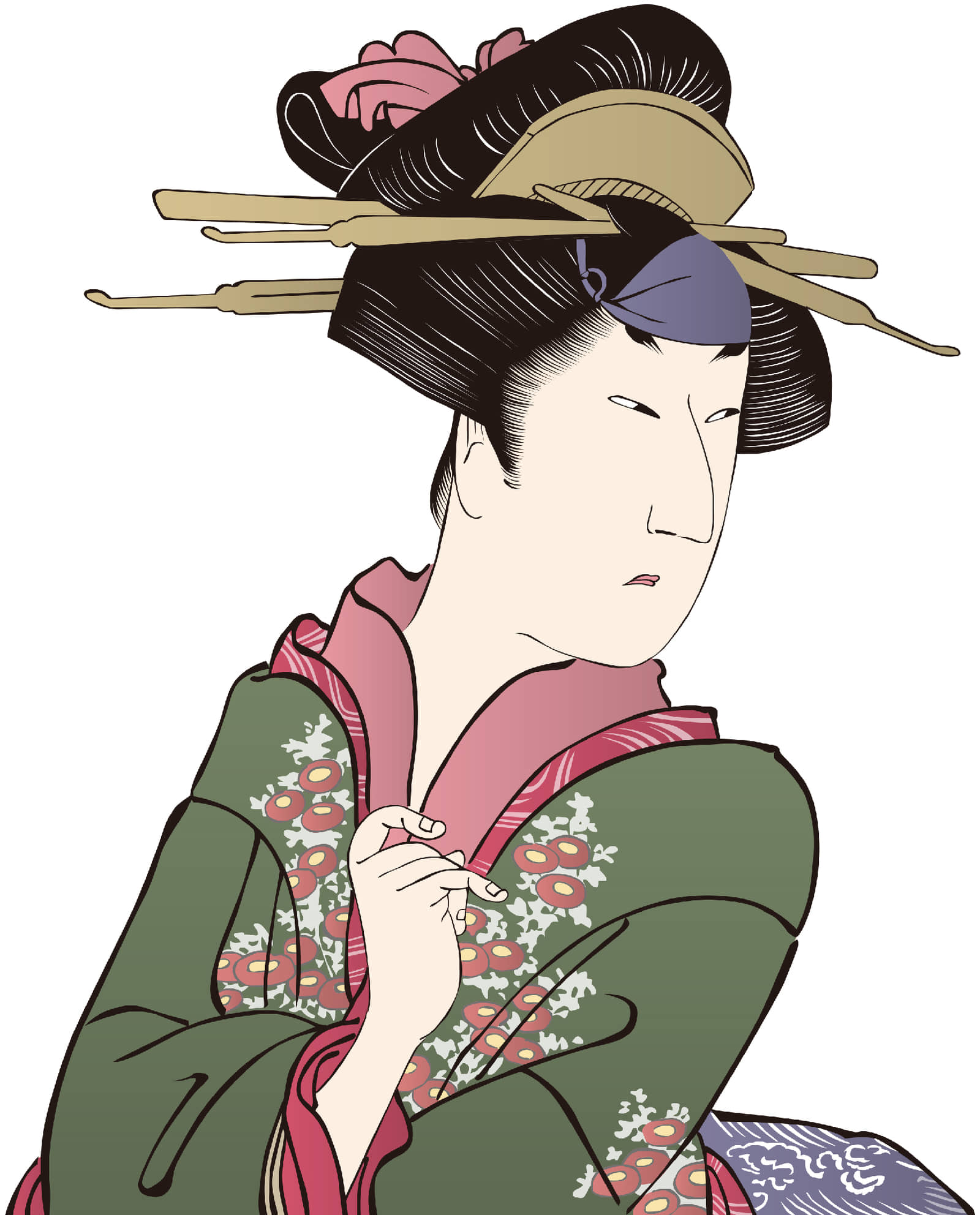
It’s said that on many occasions, at the end of the works of kabuki some of the actresses exercised prostitution, accepting proposals from some of the spectators. That, together with some artists doing dances away from the original and much more suggestive and sexual, ended up bothering the Tokuwaga shogunate. Finally in 1629 the shogunate prohibited the presence of women on stage. Others point out that although they used the excuse of public moral, in fact what bothered the shogunate is that Kabuki’s shows represented real problems and were very critical with the society of the moment.
Whether this is the real reason or not, the fact is that women were banned from Kabuki forever, and that rule remains until today. At first, it was young men who took over. The kabuki had become too popular to simply disappear with the ban. However, it seems that there was also prostitution among young boys and the shogunate forbade it too. And that’s how the Kabuki we know today was born, played only by adult men.
The Kabuki today
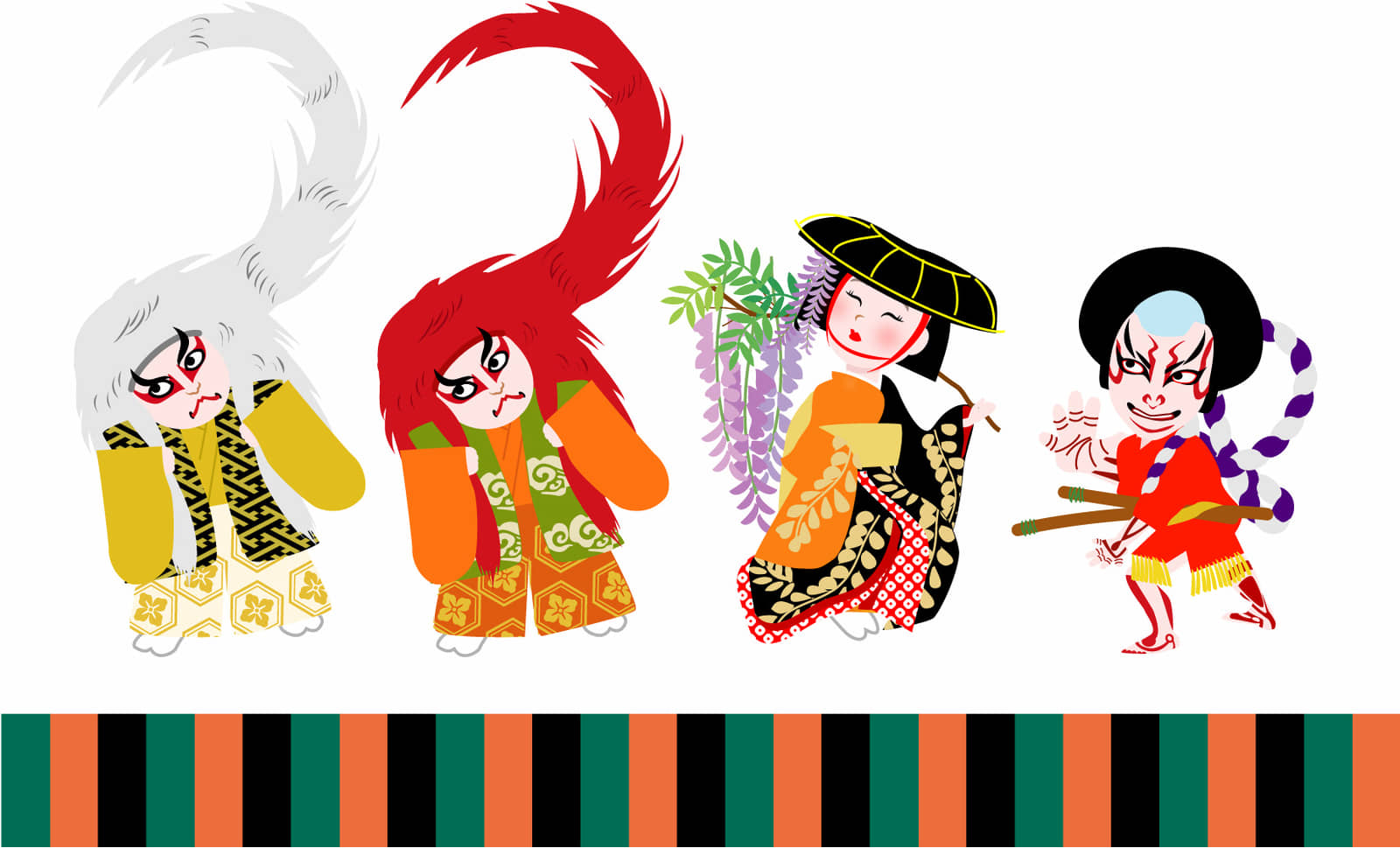
As I have just explained, since 1629 adult men were the only ones authorized to act in Kabuki performances. Therefore, even female roles are played by male actors, called onnagata (onna in Japanese means woman). These actors specialize in female characters and greatly exaggerate their makeup, expressions and movements trying to create that illusion of femininity, although it’s an idealized vision of women somewhat removed from reality.
But it’s not just about the onnagatas. Kabuki’s shows put a lot of emphasis on exaggeration, both in makeup and clothing and in gestures and interpretation. These highly exaggerated movements are part of the kabuki, but at present they also serve to help the public to better understand the meaning of the play or what the actors are saying, since it’s usual that in kabuki performances they use ancient Japanese, which is difficult to understand even for the natives since it’s a Japanese that was used years ago but not in current times (like reading old books in their original format). Unlike the current theater to which we’re used, the Kabuki has remained almost intact for 400 years. In that point, it’s more similar to Greek tragedies or the Elizabethan theater, but with the difference that the Kabuki has survived and reached the current Era while the other two at one time disappeared when changing the tastes of the spectators.
While it’s true that when the Meiji period (1868-1912) came there were new censures and reforms, and the new government wanted to turn the Kabuki into a respectable scenic art as the Noh was. That is why today the Kabuki is no longer that low-class performing art but is considered something more sophisticated and prestigious. However, the actors managed to follow the new rules while keeping the essence of the Kabuki theater.
Kabuki’s plays are usually about Japanese myths, country history, epic battles, romances, dramas with a tragic ending and parodies. There are mainly three categories:
- Jidaimono (時代物): these works are about ancient history and Japanese legends. The main characters are usually gentlemen, empresses, samurai, princesses, nobles, etc. It also usually includes vassals. The plot is located in distant historical periods, prior to the Edo period. One of the most recurrent is the Heian period. Although many are usually based on historical figures that existed in reality, they modify their name slightly so that it’s not so obvious who they’re talking about.
- Sewamono (世話物): In opposition to jidaimono, the protagonists of sewamono plays are usually people of the lower classes. Farmers, townspeople, merchants, prostitutes, etc. That’s why it’s often referred to as “domestic plays.” They’re usually located in the post-1600 era and the plot generally revolves around romances and family dramas: the conflict between human emotions and family duties, social pressures and limitations, etc. Some of the most famous plays focus on lovers who cannot be together for their families or social differences and decide to commit suicide to be together in death, in the purest Romeo and Juliet style.
- Shosagoto (所作事): Basically, they’re dance dramas performances. These dance scenes are performed by the onnagata actors.
But all these categories have similar characteristics of kabuki. For example, the stage. The kabuki has a very particular scenario and much more complex than normal scenarios. In addition to the typical decoration in any work, the stage has a catwalk called “hanamichi” (flower path in Japanese) that extends to the audience and allows the actors to be closer to the public and make surprise and majestic entry. It also has the Mawari Butai, which, as its name in Japanese indicates, is a rotating stage that turns slowly and trap doors that allow the rapid change of a scene or the appearance / disappearance of the actors.
Another characteristic of kabuki that can be very funny are the “kurogo” (黒衣). Kurogi in Japanese literally means “dressed in black” and they’re “invisible” helpers. Or so they pretend, because obviously as much as they are completely dressed in black and even cover their faces, the public can see them, but they pretend like they don’t see them. They’re in charge of helping the actors, either passing them objects they need for their performance or helping them to change their clothes. One of the best parts of Kabuki’s performances is the “Hikinuki”(pull-take off), which is when an actor (usually a female character) “magically” instantly changes a costume onstage. To be able to do this, the help of the kurogo is essential.
So far I have talked all the time about the actors, but there is another important part without which the kabuki wouldn’t be the same: music. During the plays there’s live music performed with traditional Japanese instruments such as taiko. Although musicians generally remain hidden, sometimes you can see them from certain parts of the audience.
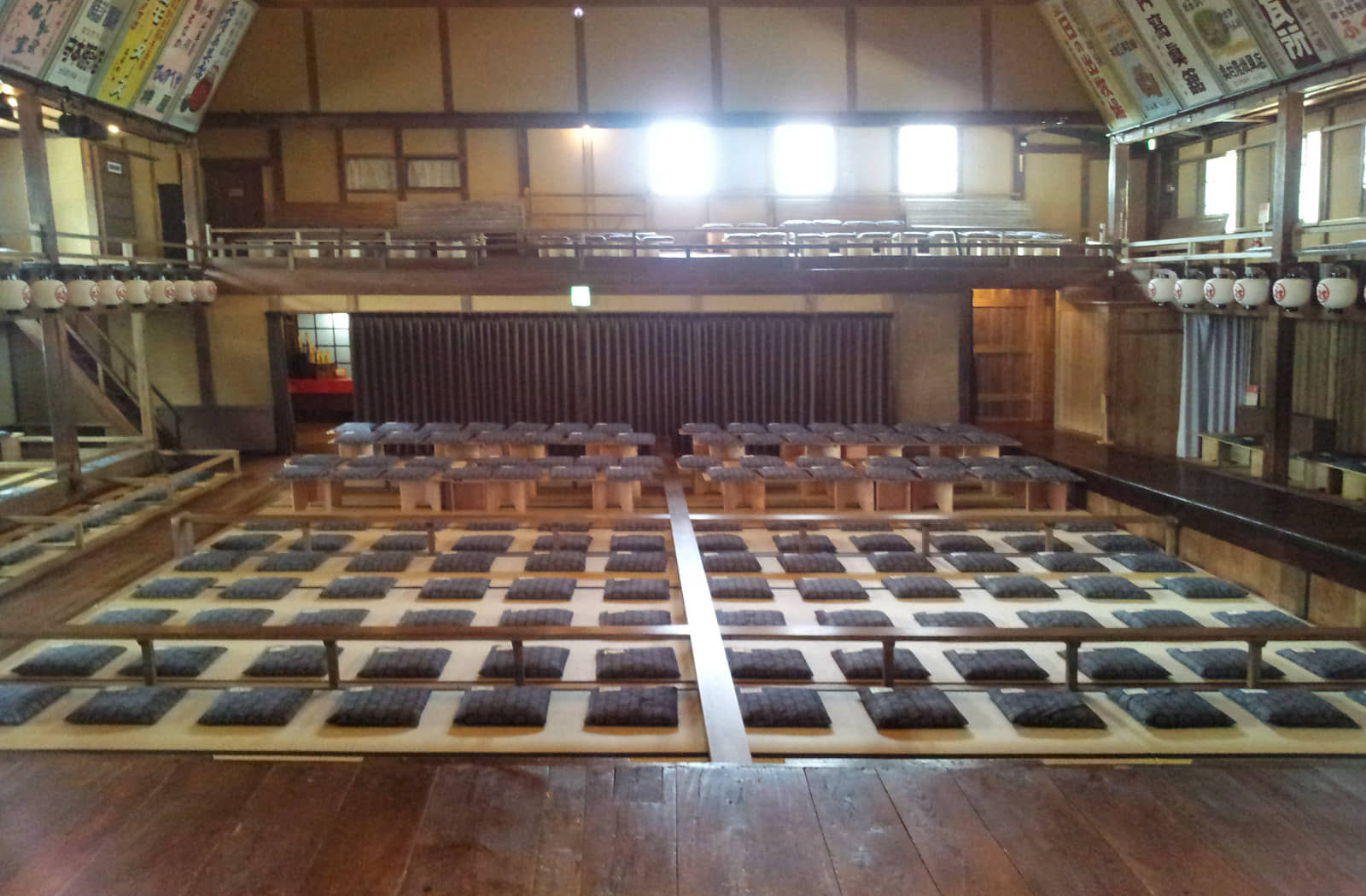
And speaking of the audience, if suddenly during the play you hear a group of people shouting, don’t be worried or think that it’s disrespectful. These people shout the names of the actors. In the world of kabuki, the actors transmit their knowledge from generation to generation, but not only that, they also transmit their “yago” or hereditary artistic name. The audience that shouts the artistic name of the actors are the “omuko”, and they’re a group of people who belong to an association that’s dedicated only to that, to shout the name of the actors. Normally the omuko are related to the theater company to which the actors of that performance belong. The world of kabuki is formed generally by familiar companies that have passed from generation to generation and are very close and with a very hierarchical structure. The omuko usually have some kind of link with these companies and know perfectly well at what moment of the play to shout so as not to interfere with the atmosphere and at the same time give support to the actors.
Where to watch Kabuki
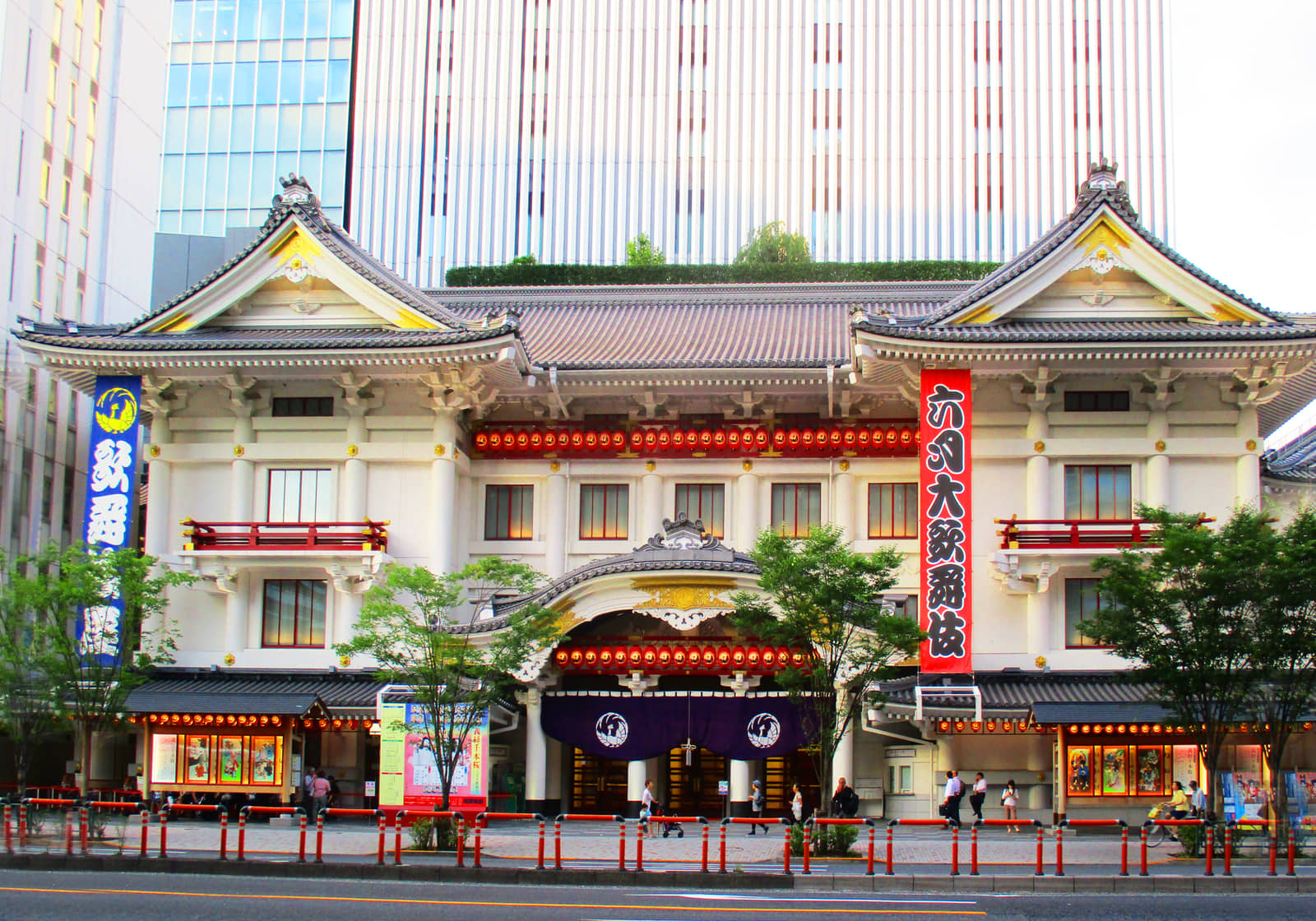
Today there are still a few places where you can see Kabuki performance, but they only do shows certain dates a year and getting tickets can be difficult and expensive. So in my opinion for those who are visiting Japan and want to see a Kabuki show, the best option is the Kabukiza Theater in Ginza.
The aim of Kabukiza is for sending the beauty and greatness of Kabuki to the world. Therefore, they have some facilities for foreigners. For example, The theatre has English audio guides in some of the performances, and shows are held practically everyday. Ticket prices are around 4,000 JPY to 20,000 JPY depending on the seat and advance booking required via online.
The truth is that the a Kabuki show can last several hours and perhaps there’re people who are interested in know how is a Kabuki performance but doesn’t want to be so long in the theater. Or maybe they don’t have that much budget. In the Kabukiza Theater you can buy the “Single Act Tickets”, a ticket only for one act for around 2,000 JPY. To buy these tickets you have to go to the theater the same day of the performance and stand in line before the act. The problem is that if there are many people in front of you, you may run out of tickets and have to wait for the next act.
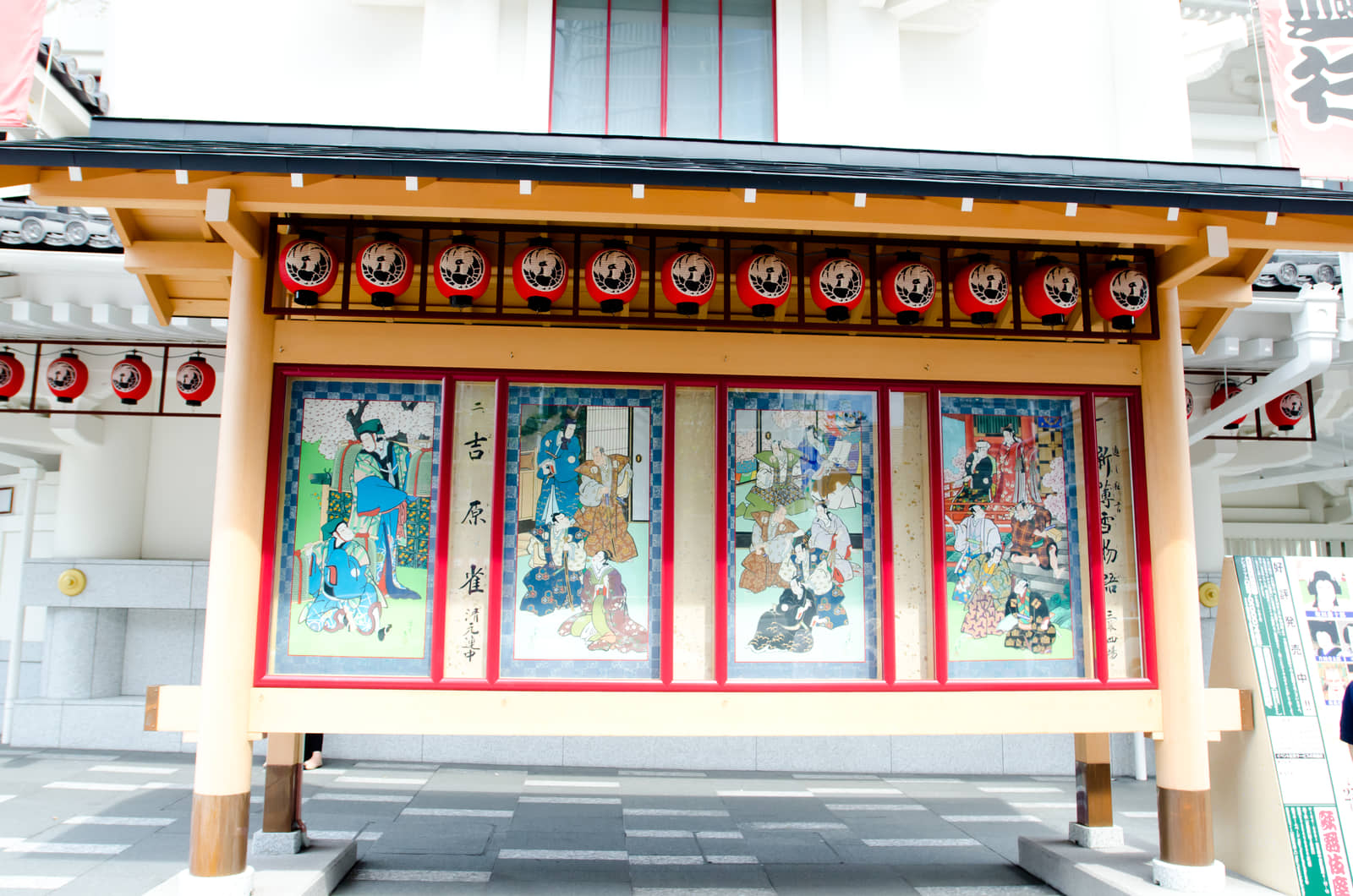
By the way, something typical in kabuki is that they only perform a part of a complete story. They’re popular stories that all Japanese know and therefore even if only a part is represented they know the context. But probably the foreigners who want to enjoy the work don’t know Japanese history and mythology so much. That’s why I recommend informing you before about what history they’re going to play and informing yourselves before attending the show by searching the internet or books.
Get Tickets for Kabuki Theater in Tokyo Here
Access: 1 min walk from Higashi Ginza Station Exit 3
If you want to check other places where you can see a Kabuki performance and when, you can visit the official website here.
If you want to know more about Kabuki or other interesting cultural and sports activities in Japan, check out these articles too!
▽ Related Articles ▽
▼ Editor’s Picks ▼
Written by
From Barcelona to Tokyo. Coffee & Adventure lover🌏☕️
I started to like Japan because of the anime, music and doramas, but after my first trip to the country I found what I love the most: traveling around, the culture and history. I have travelled a lot in Japan, but I still have many places to discover that I want to share with you🙋🏼♀️ Let’s discover Japan together!
Also, as a foreigner living in Japan for over 6 years I understand what kind of things are difficult when you move here and I want to help other people in the same situation that I have in the past.
